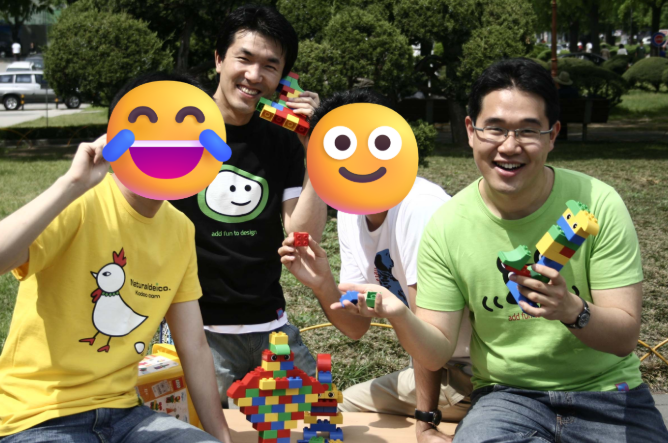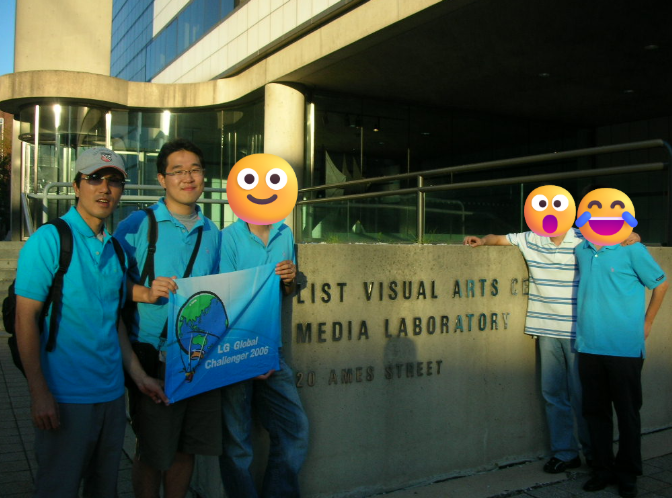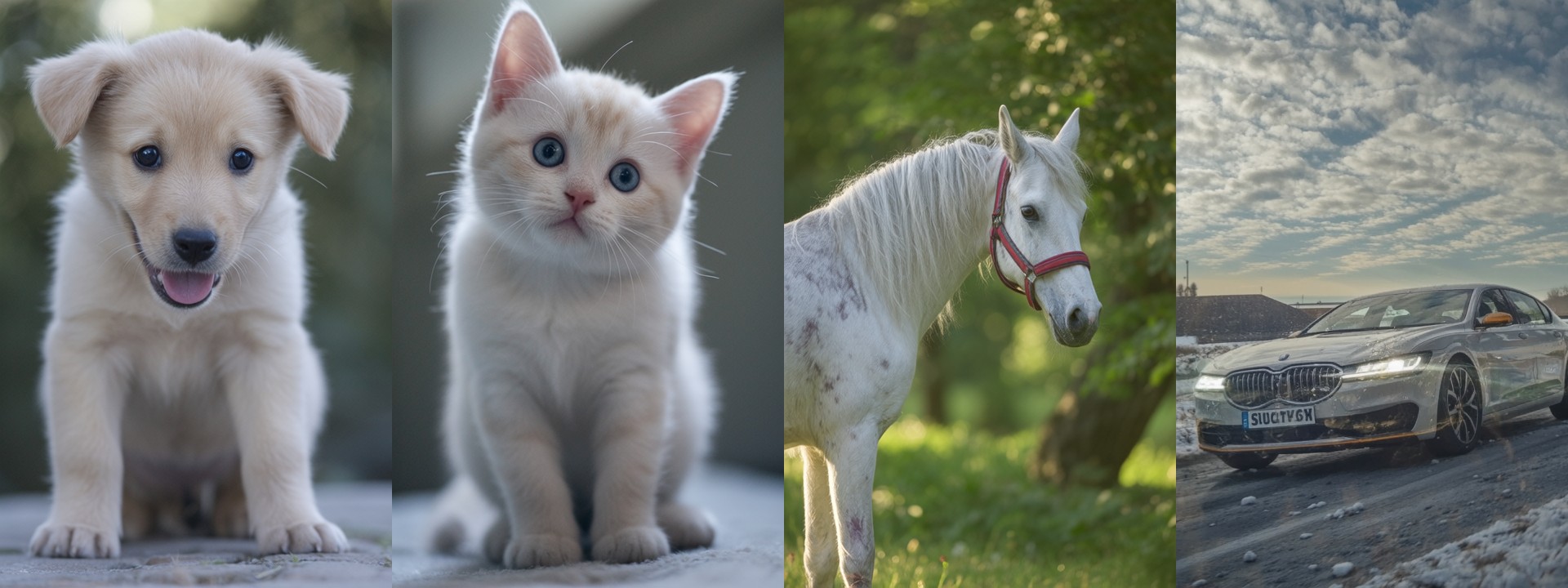Why I Started Laight AI With Woosang
Peter Thiel supposedly writes in his well-known book Zero to One that:
“Founders should share a prehistory before they start a company together—otherwise they’re just rolling dice.”
He also compares the decision of choosing a co-founder to getting married:
“When you start something, the first and most crucial decision you make is whom to start it with. Choosing a co‑founder is like getting married, and founder conflict is just as ugly as divorce.”
I say “supposedly” because it’s been years since I read the book, but I distinctly remember Thiel stressing the importance of starting a company with someone you know well—and I agree.
In my own experience working at a few successful startups in Korea, the chemistry between co-founders—or even the first few team members—was often the key not only to the business success but also to the company culture, which “matters.” That’s why I want to start this post about how I co-founded Laight AI with Woosang by sharing how we first met.
Woosang and I met as undergraduates at Yonsei University. On paper, we had no reason to know each other—he majored in astronomy, I in business administration, and he was four years ahead of me. The only reason we crossed paths was a student club that prepared undergrads for consulting firm interviews. But this story is not about consulting but a student project that took us to the US.
In 2006, Woosang and I—along with two other club members—formed a team to apply for a student program called the LG Global Challenger. I’ll save the full story for another time (especially because I have deep admiration for the late Chairman Bon-moo Koo, whose and personal interests in this project made it really special), but in essence, the program sponsored teams of undergraduates to travel internationally and explore ideas that could spark innovation in Korea.

The program wasn’t about promoting LG or its products—it was, in hindsight, about giving back. It gave young people the opportunity to experience innovation abroad, think deeply, and bring those ideas back home.
At the time, Woosang and I weren’t particularly close. But during the preparation for the application—and especially after we were selected and began traveling through cities like Cincinnati, Chicago, San Francisco, LA, Boston, and New York—we spent countless sleepless nights working together. We visited companies like Google, P&G, IDEO, Motorola, the BMW Design Center, MIT Media Lab, and others. The travel schedule was brutal—almost a new city every night. It was an intense, unforgettable ride.

The true test came after the trip. The final step was submitting a report to LG summarizing our findings. To our surprise, the other two teammates couldn’t—or wouldn’t—contribute meaningfully. That left just the two of us to finish a long, tedious, and often stressful report on our own.
We had no strong reason to push ourselves. While the top teams received awards and even job offers from LG affiliates, the real incentive was relatively weak for two exhausted undergrads during summer break. Many teams, we heard, gave up or submitted low-effort reports.
We seriously considered doing the same.
But after a few late-night talks at school, we made a decision: when most people give up, the few who endure are the ones who will win. If eight out of ten teams drop out, the remaining two compete for the top. So we kept going. We wrote our report on “Open Innovation”—how companies can create R&D ecosystems with academic and non-academic partners beyond their own walls. It was another round of all-nighters, but we made it through.
We ended up winning second prize. We shook hands with Chairman Koo. And the process left a deep mark on both of us.
Woosang and I earned each other’s trust during that period. Partly because we had to carry the weight on our own, but also because we truly complemented each other. I wasn’t an easy person—I was blunt, sometimes aggressive and impatient, though I worked hard and had flashes of creativity. Woosang was the opposite: thoughtful, calm, always listening, and kind. He had the kind of analytical, scientific mind I respected, and I like to think I brought some compelling words to the table. We balanced each other out.
That experience taught us something important as well: in high-pressure environments with unclear rewards, it’s not always talent or ideas that win—it’s grit, teamwork, and trust.
After graduating from Yonsei, our paths diverged. I spent almost eight years abroad in the UK and the US, and we lost touch.
But when we reconnected in 2020, nearly a decade later, it felt like that project had happened just yesterday.
More on how we went from there to starting Laight AI—next post.
창업스토리 – 1
왜 나는 김우상님과 함께 라이트에이아이를 시작했는가
피터 틸(Peter Thiel)은 유명한 <Zero to One>에서 이렇게 말했다고 합니다.
“Founders should share a prehistory before they start a company together—otherwise they’re just rolling dice.”
그는 또 공동 창업자를 선택하는 결정을 결혼에 비유하며 다음과 같이 말했습니다.
“When you start something, the first and most crucial decision you make is whom to start it with. Choosing a co‑founder is like getting married, and founder conflict is just as ugly as divorce.”
제가 이 책을 읽은 지 오래돼서 정확히 저런 표현인지 기억은 못 하겠습니다. 하지만 피터 틸이 “잘 아는 사람과 함께 창업하라”는 메시지를 강조했던 기억은 매우 선명하고, 저 역시 전적으로 동의합니다.
제가 한국에서 몇몇 성공적인 스타트업에서 일한 경험에 비추어 보면, 공동 창업자 간의 케미스트리 또는 초기 팀원들 사이의 조화는 단순한 사업의 성공을 넘어서 회사의 문화나 정체성에도 큰 영향을 주었습니다. 그래서 이 글도 김우상님과 제가 어떻게 처음 만났는지에 대한 이야기로 시작하려고 합니다.
김우상님과 저는 대학교 학부 시절에 처음 만났습니다. 사실 서로 알기 힘든 관계였습니다. 김우상님은 이과대학 천문학과 전공이었고 저는 상경대학 경영학과 전공이라서 단과대 건물도 멀리 떨어져 있었습니다. 당연히 같이 들을 수업이 있던 것도 아니고요. 또 김우상님이 저보다 네 학년이 위였습니다. 우리의 인연이 이어진 유일한 이유는, 컨설팅 회사 입사를 준비하는 학생 동아리 활동을 함께했기 때문입니다. 하지만 이 이야기는 컨설팅보다는 LG 글로벌챌린저라는 학생 프로젝트에 관한 이야기입니다.
2006년, 김우상님과 저는 두 명의 동아리 친구와 함께 팀을 꾸려 LG글로벌챌린저라는 학생 프로그램에 지원했습니다.(이 프로그램은 고 구본무 회장님이 미래에 대한 투자라는 확신으로 특별하게 관심을 갖고 지켜보셨던 것으로 기억합니다.) 이 프로그램은 대학생들이 해외로 나가 한국에 혁신을 불러올 수 있는 아이디어를 탐색하게 하는 것이 목적이었습니다.

이 프로그램은 LG를 홍보하거나 제품을 알리기 위한 것이 아니라 대학생들이 해외에서 기업과 사회 혁신에 대해 깊이 고민하고, 체험하고 그 아이디어를 한국으로 가져오게 하는 기회였습니다.
이 프로그램 시작 전 저와 김우상님은 아직 그리 친한 사이는 아니었습니다. 하지만 프로그램 지원 준비 과정과 선발된 이후 신시내티, 시카고, 샌프란시스코, LA, 보스턴, 뉴욕 등 여러 도시를 여행하며 밤을 새워가며 함께 일하면서 자연스럽게 가까워졌습니다. 우리는 Google, P&G, IDEO, 모토로라, BMW 디자인 센터, MIT 미디어랩 등 다양한 기관을 방문했습니다. 일정은 살인적이었습니다. 거의 매일 비행기를 타고 새로운 도시로 이동했습니다. 정말 학생의 체력과 정신력 덕분에 견딜 수 있었던 것 같습니다.

진짜 시험은 이 탐방에서 돌아온 후였습니다. 마지막 단계는 여행에서 얻은 내용을 바탕으로 최종 보고서를 LG에 제출하는 것이었는데, 예상치 못하게 다른 두 명의 팀원이 거의 기여하지 못했습니다/않았습니다. 결국, 저와 김우상님, 둘만 남아 보고서를 완성해야 했습니다.
사실 남은 둘도 보고서 제출을 포기할까 고민했습니다. 수상 팀에게는 LG 계열사 입사 기회를 약속받는 등의 특전도 있었지만, 사실 여름방학을 다 바쳐서 탐방을 마치고 돌아온 피곤한 대학생 둘에게는 동기부여가 약했습니다. 많은 팀이 중도 포기하거나 형식적인 보고서를 제출했다고 들었습니다. 그래서 저와 김우상님도 그럴까 진지하게 고민했었습니다.
하지만 며칠 밤늦게 학교에서 대화를 나눈 끝에, 우리는 이렇게 결심했습니다: 대부분의 사람이 포기할 때, 끝까지 버티는 소수가 승리한다. 열 팀 중 여덟 팀이 포기하면, 나머지 두 팀이 상을 두고 경쟁하게 되는 법이다. 그래서 우리는 포기하지 않고 계속하기로 했습니다. ‘오픈 이노베이션’, 즉, 기업들이 내부의 벽을 넘어 학계나 다른 외부 파트너와 함께 R&D 생태계를 만드는 방식에 대한 보고서를 쓰기로 했죠. 끝을 모르는 밤샘 작업이었지만, 결국 해냈습니다.
결과는 2등 상 수상. 시상대에서 구본무 회장님과 악수했고, 그 과정은 우리 둘 모두에게 큰 인상을 남겼습니다.
무엇보다 그 과정을 통해 우리는 서로에 대한 신뢰를 쌓을 수 있었습니다. 우리가 둘만 남았기 때문에 더 그랬고, 서로가 서로를 보완해주는 역할을 했기 때문이기도 했습니다. 저는 직설적이고, 때론 공격적이며 조급한 성격이었지만, 또 좋게 보면 치열하게 일하고 새로운 아이디어를 자주 냈습니다. 반면 김우상님은 항상 침착하고, 경청하며, 배려하는 성격이었습니다. 특히 저와 달리 분석적이고 과학적인 사고방식을 견지하는 김우상님이 저와 달라서 좋았고 존경했습니다. 우리는 서로의 부족한 점을 채워주었습니다.
이 경험은 상호에 대한 신뢰 외에도 중요한 교훈도 주었습니다: 결과가 불확실한 환경에서, 결국 이기는 것은 재능이나 아이디어가 아니라 포기하지 않는 것 그리고 신뢰를 바탕으로 팀워크를 유지하는 것이다.
대학을 졸업한 후, 우리는 각자의 길을 갔습니다. 저는 약 8년간 영국과 미국에서 지냈고, 자연스레 연락이 끊겼습니다.
하지만 2020년, 거의 10년 만에 다시 연락이 닿았을 때, 마치 그 프로젝트가 어제 있었던 일처럼 느껴졌습니다.
우리가 그 후 어떻게 다시 만나 라이트에이아이를 공동 창업하게 되었는지는… 다음 글에서 이어가겠습니다.
